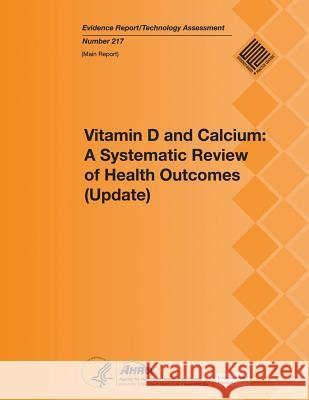Vitamin D and Calcium: A Systematic Review of Health Outcomes (Update): Main Report » książka
Vitamin D and Calcium: A Systematic Review of Health Outcomes (Update): Main Report
ISBN-13: 9781508794684 / Angielski / Miękka / 2015 / 426 str.
Vitamin D and Calcium: A Systematic Review of Health Outcomes (Update): Main Report
ISBN-13: 9781508794684 / Angielski / Miękka / 2015 / 426 str.
(netto: 148,47 VAT: 5%)
Najniższa cena z 30 dni: 145,77 zł
ok. 13-18 dni roboczych
Dostawa przed świętami

Darmowa dostawa!
Vitamin D was classified as a vitamin in the early 20th century and in the second half of the 20th century as a prohormone ("conditional" vitamin). There are two forms of vitamin D: vitamin D3 (cholecalciferol), which is produced from the conversion of 7-dehydrocholesterol in the epidermis and dermis in humans, and vitamin D2 (ergocalciferol) which is produced in mushrooms and yeast. The major source of vitamin D for humans is exposure to sunlight. The efficiency of the conversion of 7-dehydrocholesterol to vitamin D3 is dependent on time of day, season of the year, latitude, skin color, and age. There is little vitamin D that occurs naturally in the food supply. The major naturally occurring food sources include fatty fish, beef liver, and egg yolk. In the U.S. and Canada, the major dietary source of dietary vitamin D is fortified foods, including cow's milk and, depending on country, other fortified foods and dietary supplements. This systematic review answers key scientific questions on how dietary vitamin D and calcium intakes affect health outcomes, including What the effect of vitamin D, calcium, or combined vitamin D and calcium intakes have on clinical outcomes, including growth, cardiovascular diseases, body weight outcomes, cancer, immune function, pregnancy or birth outcomes, mortality, fracture, renal outcomes, and soft tissue calcification.











